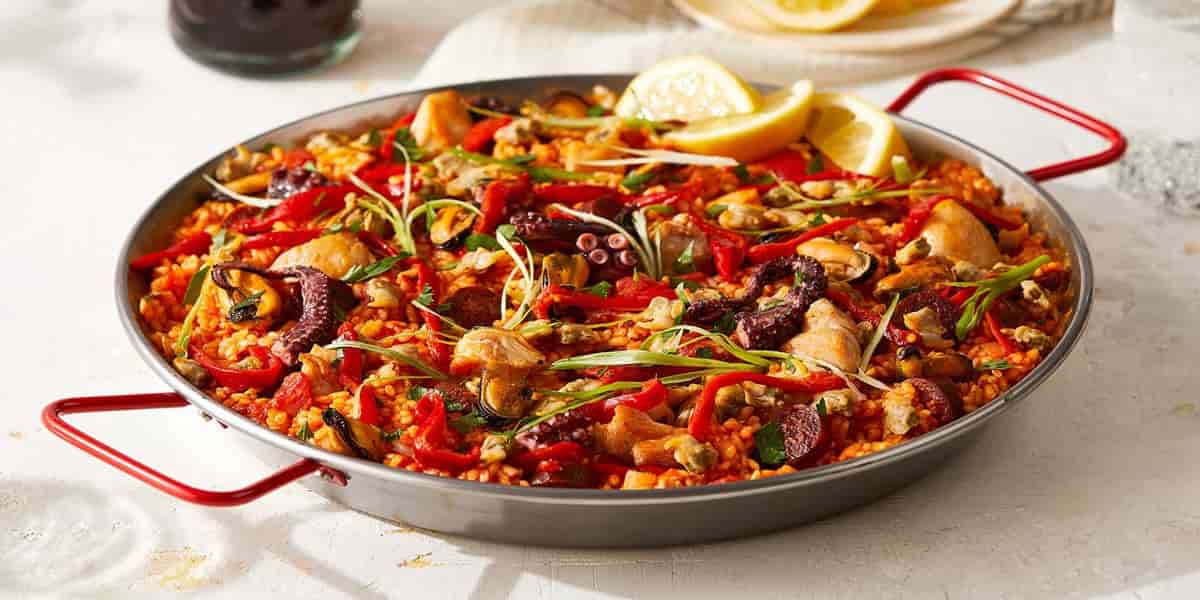Paella
Doodlebrary
- Paella originates from the region of Valencia, Spain.
- Traditionally a dish for farmers and laborers, it was made using local ingredients like rice, vegetables, and beans.
- Meats such as chicken, rabbit, and snails were added over time.
- Coastal regions developed seafood versions with ingredients like shrimp, mussels, and squid.
- Rice: Short-grain varieties like Bomba or Calasparra, which absorb flavors well and maintain texture.
- Saffron: Gives the dish its iconic golden color and adds a subtle flavor.
- Proteins: Includes chicken, rabbit, seafood (shrimp, mussels, clams), or a mix.
- Vegetables: Bell peppers, tomatoes, onions, and peas provide freshness and color.
- Seasonings: Garlic, paprika, and herbs like rosemary or thyme for depth of flavor.
- Cooked in a shallow pan called a paellera.
- Traditionally cooked over an open flame for even heat distribution.
- A signature element of the dish is the caramelized rice crust at the bottom, known as socarrat.
- Ingredients are cooked in layers, ensuring that each ingredient retains its flavor and texture.
- Valencian Paella: The classic version, made with rice, chicken, rabbit, and sometimes snails.
- Seafood Paella (Paella de Marisco): Includes shrimp, mussels, clams, and squid; no meat is used.
- Mixed Paella (Paella Mixta): A combination of seafood and meats.
- Vegetable Paella (Paella de Verduras): A plant-based version made with seasonal vegetables.
- Paella is more than just food; it is a symbol of Spanish culture and communal dining.
- Often prepared for celebrations, family gatherings, and festivals.
- It represents the spirit of sharing and enjoying food together.
- Paella has gained international popularity and is served worldwide, often with variations to suit local ingredients.
- Chefs around the world have created their own versions, sometimes fusing local flavors with the traditional recipe.
- Tips for Making Authentic Paella
- Use a proper paellera for even cooking and to achieve socarrat.
- Select quality short-grain rice and avoid stirring the rice while cooking to allow the crust to form.
- Ensure saffron is used for authentic flavor and color.
- Cook over medium heat for consistent results.
- Conclusion
- Paella remains one of Spain’s most iconic dishes, loved for its rich flavors and versatility.
- Whether you’re trying the classic Valencian version or a seafood twist, each variation carries a bit of Spanish history and tradition. Its appeal lies in the communal nature of the dish, making it a symbol of sharing and celebration across cultures.
